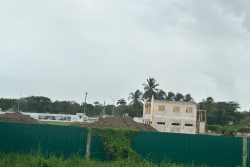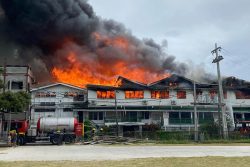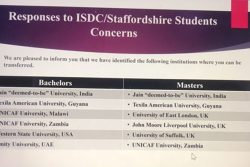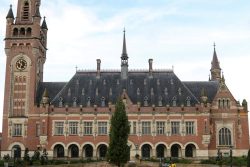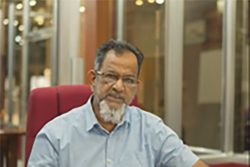In seeking to improve the housing delivery system in 2017, the Central Housing and Planning Authority (CH&PA) plans to regularise 21 areas, which will make 1,852 lots available for housing.
This is according to a report from the authority, which says the agency would seek to improve the housing delivery system by pursuing a range of settlement development initiatives, including ensuring a comprehensive approach in planning settlements and regularising squatting areas.
It says the main challenge in this regard is the transfer of lands from GuySuCo to the CH&PA, which would affect the completion/recording of final plans. Nonetheless, it adds, 21 areas would be regularised in 2017, with 1,852 lots being made available for regularised housing.
The report notes that the agency’s budget proposals were informed by its medium-term strategy, which is taken from the 2016 to 2020 Housing Plan of Action. It says the main objectives of the agency’s strategy within the plan of action are to place emphasis on the authority’s planning function with respect to settlement development and land use control and management; to re-focus on low income earners and state employees and youths for housing; to enhance collaborations with Local Development Organs (LDOs) in the land development and upgrading process; and to enhance the public participation in the housing and community development process.
The report says the consolidation of selected existing housing areas and regularised squatting areas and focus on the development of low income settlements is another key area of the budget proposals.
Additionally, the report said that the authority is currently exploring a site to build very low cost wooden houses to accommodate squatters in Central Georgetown in areas such as Sophia and East and West Ruimveldt, among others.
In terms of the new communities, the report indicated that there will be rent-to-own apartments, and two-bedroom and three-bedroom houses that will cater for the needs of low, moderate and middle-income persons. There will also be the construction of wooden houses, which is in keeping with the government’s plan of having a green economy and boosting local materials industry, it adds.
Under the goal of improving the housing delivery system, the report says there will be construction of various housing solutions for low income households through partnership with the private sector and civil society organisations; enhancement of the beneficiary selection process through policy review with an emphasis on low income earners; and the Collaboration which LDOs to provide adequate community facilities and basic services. The report adds that the authority envisions that the implementation of the various housing solutions will be achieved through partnerships with the private sector.
The report also says that planning, awareness and renewed interest at national, regional and local levels will be given more significance. As a result, it pointed out that a National Planning Forum will be held during the first quarter of the year, focusing on dialogue between the major stakeholders to initiate actions to enhance the current fragmented framework.
‘Model village’
Keeping a keen focus on the housing solutions for 2017 and beyond, the report pointed out that authority will be developing a “model village to display the proposed housing solutions that the Government of Guyana will be making available to make housing affordable to the Guyanese people.”
It explained that the development of the model village will be achieved by organising a display exhibition where life-sized houses will be on display for members of the public to view. The range of housing solutions is expected to target low-moderate-middle income groups, young professionals, and singles.
With building the model village and “diversified green economy,” the report pointed out that there will be central sewerage, LED lights, proper landscaping, tree planning and kitchen garden competition for all new housing areas.
The new housing units will also be made disability-friendly, with ramps and internal configuration suitable for our blind and disabled applicants.
It further explained that several developers will be given different lots in the area to construct houses, which they will be allowed to sell after the exhibition to eligible persons on the authority’s waiting list and those who have been prequalified for mortgages by the commercial banks.
“Developers who participate will also be given the opportunity to showcase their building systems, methodology for construction and other features of home construction. Suppliers of building materials will also be invited to participate. The public will be free to interact with the developers, financial institutions, insurance companies, home improvement companies eg Courts to arrive at solutions and will be done to inform,” the report added.
It also said that a survey would be done to inform the government of the citizen’s preference and persons with house lots who are desirous of building can communicate with the developer to build for them.
Roll-over projects
Of the just over $8 billion budgeted for the CH&PA for 2017, it intends to use $2.3 billion on roll-over projects (ongoing infrastructure works) from 2016 for infrastructural works, and procurement and installation of electrical network in regions 3,4,5 and 6, which was not completed in 2016.
The report said $471.3 million is earmarked for procurement and installation of electrical networks under the Electrical Programme (existing schemes requiring electricity) in regions 2, 3, 4, 5, 6, and 7.
Also, $225.9 million is set aside for the procurement of materials, construction of houses and payout of subsidies for the Hinterland Project (Housing and Housing Improvement in the Hinterland) in regions 1 and 9.
The report said $2.5 billion is budgeted for the consolidation of existing housing schemes through the conduct of a feasibility study of existing housing schemes, which was requested by CHPA Board prior to intervention. It will also see the upgrading of roads, drains and structures in low income, regularised squatting areas and other planned housing areas in regions 1, 3, 4, 5, 6, 7, and 10.
It was noted that $1.6 billion is expected to be used for the first phase of infrastructural development works and housing pilots (town houses, duplexes and single flat houses) in regions 3, 4, and 10; $120 million for upgrading of social facilities in planned housing areas; $85 million for institutional strengthening and operations to provide professional development, in-house training in effective customer service for all staff and other capacity building programmes for supervisors & managers, and professional exchange;
$30 million for policy review and action which will lead to the development of a computerised beneficiary selection model, housing policy document, squatter regularisation and relocation plan in all the regions; and $13 million to host a housing exhibition to encourage public participation in the building process, in Region 4.
An additional sum of $669.5 million will be used to cover the current expenditure for administrative, salaries, fuel and other expenses, the report said.
